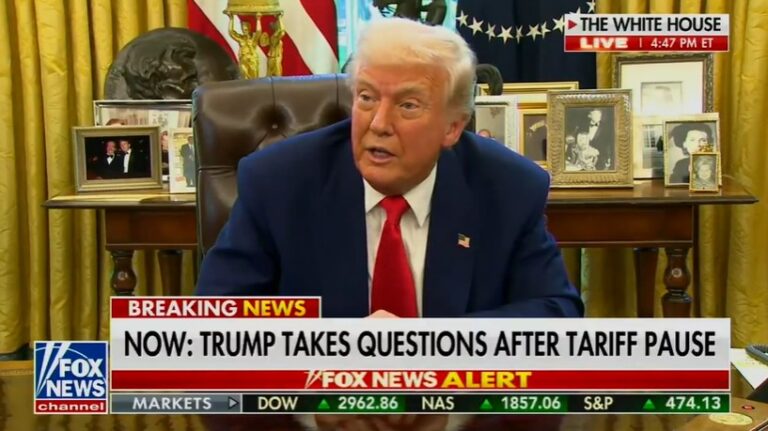The Trump administration has dispensed about $530 billion to millions of small businesses to cushion them from the sharp downturn induced by the coronavirus.
The question is: how effective will the Paycheck Protection Program be?
Some small business owners say the program’s low-cost loans have enabled them to forestall layoffs or rehire staff – and they appreciate that the loans are forgiven if they spend the bulk of the money saving jobs.
However, even with these incentives, the program is running up against a brutal reality: unemployment is rising to Depression-era levels and a deep recession has settled upon Main Streets across the country even as states begin to restart their economies.
The program has faced criticism for some missteps: applications were held up early on as government computers were overwhelmed; large businesses and publicly traded companies received loans while many mom-and-pops were shut out of the first round of funding and it’s still not entirely clear what conditions business must meet to have their loans forgiven.
A challenge for many small businesses is deciding how to use the money. To have the loan forgiven, at least three-quarters of the money must go toward paying workers. But with the economy frozen and their customers at home, some owners are reluctant to recall staff that they don’t need.
Below is a more detailed look at the program’s successes, failures and unknowns.
WHAT ARE THE BENEFITS FOR COMPANIES?
The Small Business Administration has so far approved loans to nearly 4 million businesses. Now in its second round of funding, an increasing number of loans are going to the smallest companies. The average loan size in the $349 billion first round of funding was $206,000; as of Wednesday the average loan size for the second round was $75,000. Proponents like Marco Rubio, R-FL, head of the Senate small business committee, note that many loans are being made by community banks to local businesses.
The immediate infusion of cash has allowed businesses to keep workers on the payroll or rehire them., as well as pay rent or mortgage interest and utilities.
The loan money means many laid-off workers could get their jobs back. And it ensured a paycheck for those who are still working.
WERE THERE DRAWBACKS FOR COMPANIES THAT GOT LOANS?
Many owners are worried they won’t get the loan forgiveness the program promises and will be forced to repay the money. The fears come from the requirement that companies spend 75% of the loan money on workers’ pay for the loans to be forgiven. But owners whose businesses remain shut say they need money for reopening; restaurants, for example, need to order food.
Katie Vlietstra, an executive at the National Association for the Self-Employed, questions whether instead of forgiveness, the loans should be converted to grants. She says data still to be collected about the program may help answer whether, in the case of another pandemic, “is this the right vehicle in which to support small businesses?”
DID SOME COMPANIES GET LEFT OUT?
Some businesses that applied in the program’s first round that ran from April 3-16 had to wait weeks to find out if they’d be approved; some still are still waiting.
A U.S. Chamber of Commerce-MetLife survey taken after the first round found that while nearly a third had applied for loans, only 9% had gotten them.
“We should be looking at the number of applicants versus the number of PPP loan recipients,” says Karen Kerrigan, CEO of the advocacy group Small Business & Entrepreneurship Council.
John Arensmeyer, CEO of the advocacy group Small Business Majority, questions whether the loans have in fact gone to companies that need them most.
For example, “the entire hospitality industry got 9% of the money and 50% of the layoffs,” Arensmeyer said.
Moreover, many small businesses use freelancers rather than employees, especially companies that require workers with different expertise. But freelancers’ pay isn’t covered by the program and because a loan amount is based on employees’ compensation, many companies were limited in what they could borrow.
“I could only apply for a small loan — less than $35,000 total — and was trying to do so in the event business slows,” says Theresa Maloney, owner of Cogenta Communications, a San Francisco-based marketing firm. She has one employee and hires 10 to 20 freelancers annually.
WERE THERE DRAWBACKS FOR WORKERS?
Businesses with up to 499 workers cut more than 11 million jobs in April, according to payroll provider ADP. That includes businesses waiting for their PPP loans. And many companies are putting plans to hire new workers on hold, according to a survey the advocacy group National Federation of Independent Business took of its members last month.
Some workers called back to work after being laid off must choose between working and collecting unemployment benefits that for some might be more lucrative. The federal government is giving unemployed workers $600 a week through July 31 to supplement state benefits.
Owners are finding that some employees are too nervous to go back, especially to workplaces with a great deal of contact with the public. If owners report those workers to state governments, they stand to lose their unemployment benefits.
WHAT’S STILL UP IN THE AIR?
With over 33 million Americans filing claims for unemployment benefits the past three months, one way to judge the success of the program is how many businesses can now afford to rehire them.
“(Unemployment) claims and bankruptcies will give us a sense of whether the aid got there quick enough to prevent a catastrophe,” says Joe Brusuelas, chief economist with the accounting and advisory firm RSM US.
The trade group American Bankruptcy Institute reported that Chapter 11 reorganization filings rose 18 percent in March and 26 percent in April from a year earlier as fallout from the virus began to be felt.
A loan from the program can help a business — and its employees — through an immediate cash crunch. Still, it’s expected that many more small struggling businesses will file for bankruptcy protection or shut down, if not in the near future, then down the road. Business like retailers and restaurants have an uncertain future if they must continue to operate with social distancing requirements.
Once businesses have the money, it falls to them to adapt to the changed environment, says Erik Asgeirsson, a senior executive at the American Institute of Certified Public Accountants.
“It’s a bridge to keep businesses going and then all businesses will need to review their business model,” Asgeirsson says of the program.
(AP)











